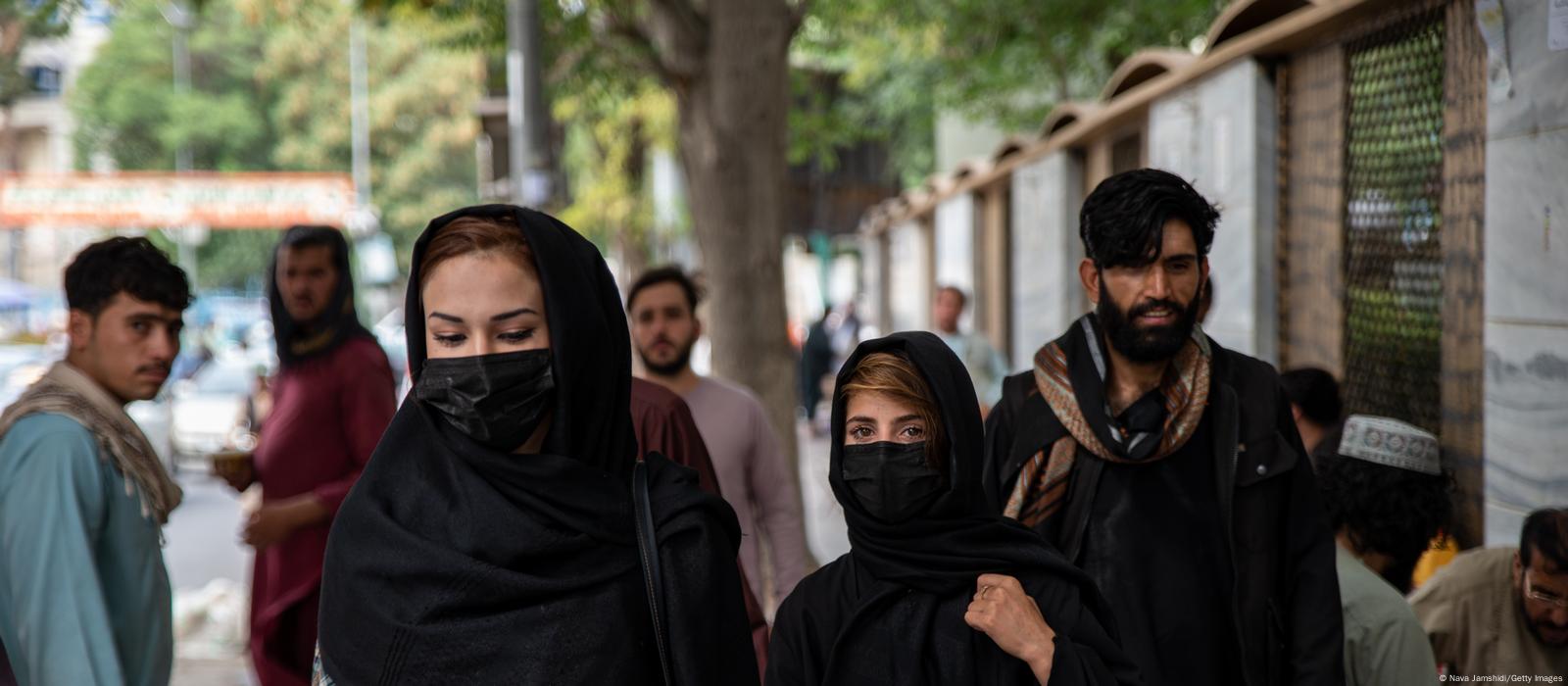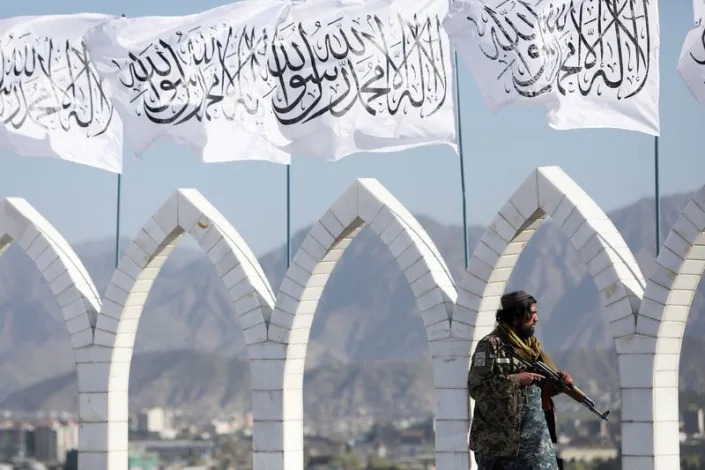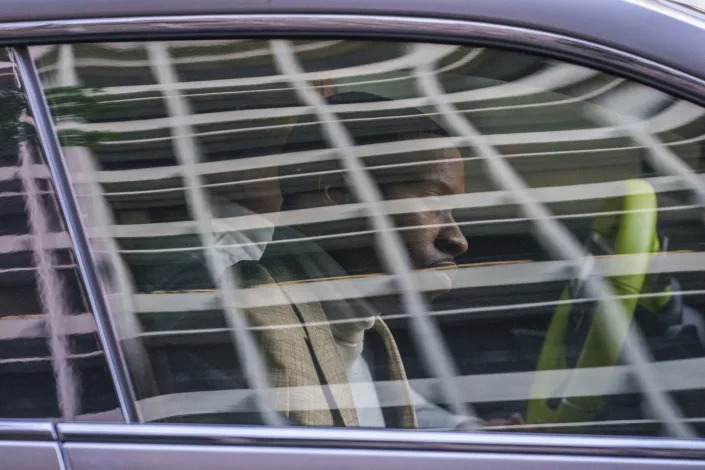Brother and sister's future separated after Taliban university ban
Issued on: 25/12/2022 -
Dreams crushed
The ban by the hardline Islamist government, which seized power in August last year, has sparked global outrage, including from Muslim nations who deemed it against Islam.
Neda Mohammad Nadeem, the Taliban's minister for higher education, claimed women students had ignored a strict dress code and a requirement they be accompanied by a male relative to campus.
But the reality, according to some Taliban officials, is that the hardline clerics that advise the movement's supreme leader Hibatullah Akhundzada remain deeply sceptical of modern education for females.
 With the new restrictions, women in Afghanistan 'are being treated worse than animals,' who are free to move on their own, says Marwa
With the new restrictions, women in Afghanistan 'are being treated worse than animals,' who are free to move on their own, says Marwa
History repeating
Minister Nadeem insists women students behaved in a way that insulted Islamic principles and Afghan culture.
"They were dressing like they were going to a wedding. Those girls who were coming to universities from home were also not following instructions on the hijab," he said in an interview on state television.
But Hamid strongly rejected the justification for the ban.
 With her dream of university ended, Marwa (2nd R) will now stay home to teach her six younger siblings © Ahmad SAHEL ARMAN / AFP
With her dream of university ended, Marwa (2nd R) will now stay home to teach her six younger siblings © Ahmad SAHEL ARMAN / AFP
"When universities opened under the Taliban, different days were specified for boys and girls," he said.
"They (girls) were not allowed to enter unless they wore a mask and hijab. How then can they (the Taliban) say they were without hijabs?"
After the Taliban seized power, universities were forced to implement new rules, including gender-segregated classrooms and entrances, while women were only permitted to be taught by professors of the same sex, or old men.
Marwa's mother, holding her newborn baby in her arms, said she felt history repeating itself.
Two decades ago she was forced to quit her studies during the Taliban's first regime between 1996 and 2001.
"I'm happy that my son is able to pursue his goals, but I'm also heartbroken that my daughter is unable to do the same," said Zainab, 40.
"If my daughter does not achieve her goals, she'll have a miserable future like mine."
© 2022 AFP
Issued on: 25/12/2022 -
Marwa (C) had hoped she would be able to follow her brother Hamid (L) into higher education but now the Taliban have banned women from attending university
© Ahmad SAHEL ARMAN / AFP
Kabul (AFP) – Marwa was just a few months away from becoming the first woman in her Afghan family to go to university -- instead, she will watch achingly as her brother goes without her.
Women are now banned from attending university in Taliban-controlled Afghanistan, where they have been steadily stripped of their freedoms over the past year.
"Had they ordered women to be beheaded, even that would have been better than this ban," Marwa told AFP at her family home in Kabul.
"If we are to be so unlucky, I wish that we hadn't been born at all. I'm sorry for my existence in the world.
"We are being treated worse than animals. Animals can go anywhere on their own, but we girls don't have the right even to step out of our homes."

 With dreams of becoming a midwife, Marwa had planned to visit remote areas of Afghanistan where women remain deprived of health services
With dreams of becoming a midwife, Marwa had planned to visit remote areas of Afghanistan where women remain deprived of health services
Kabul (AFP) – Marwa was just a few months away from becoming the first woman in her Afghan family to go to university -- instead, she will watch achingly as her brother goes without her.
Women are now banned from attending university in Taliban-controlled Afghanistan, where they have been steadily stripped of their freedoms over the past year.
"Had they ordered women to be beheaded, even that would have been better than this ban," Marwa told AFP at her family home in Kabul.
"If we are to be so unlucky, I wish that we hadn't been born at all. I'm sorry for my existence in the world.
"We are being treated worse than animals. Animals can go anywhere on their own, but we girls don't have the right even to step out of our homes."

© Ahmad SAHEL ARMAN / AFP
The 19-year-old had recently passed an entrance exam to start a nursing degree at a medical university in the Afghan capital from March.
She was thrilled to be joining her brother, Hamid, in attending the campus each day.
But now their futures have been pulled apart.
"I wanted my sister to achieve her goals along with me -- to succeed and move ahead," said Hamid, 20, a student of business administration at a higher education institute in Kabul.
"Despite several problems, she had studied until the 12th grade, but what can we say now?"
The 19-year-old had recently passed an entrance exam to start a nursing degree at a medical university in the Afghan capital from March.
She was thrilled to be joining her brother, Hamid, in attending the campus each day.
But now their futures have been pulled apart.
"I wanted my sister to achieve her goals along with me -- to succeed and move ahead," said Hamid, 20, a student of business administration at a higher education institute in Kabul.
"Despite several problems, she had studied until the 12th grade, but what can we say now?"
Dreams crushed
The ban by the hardline Islamist government, which seized power in August last year, has sparked global outrage, including from Muslim nations who deemed it against Islam.
Neda Mohammad Nadeem, the Taliban's minister for higher education, claimed women students had ignored a strict dress code and a requirement they be accompanied by a male relative to campus.
But the reality, according to some Taliban officials, is that the hardline clerics that advise the movement's supreme leader Hibatullah Akhundzada remain deeply sceptical of modern education for females.
© Ahmad SAHEL ARMAN / AFP
Girls have also been banned from secondary schools in most of the country.
Women have been slowly squeezed out of public life in recent months, pushed from government jobs or paid a fraction of their former salary to stay at home.
They are also barred from travelling without a male relative and must cover up in public. Women are prohibited from going to parks, fairs, gyms and public baths.
Marwa and Hamid come from an impoverished family but their parents had supported their pursuit of higher education.
With dreams of becoming a midwife, Marwa had planned to visit remote areas of Afghanistan where women remain deprived of health services.
"I wanted to serve women in faraway places so that we never witness the loss of a mother's life during childbirth," she said.
Instead she will now stay home to teach her six younger siblings, while her father, the family's sole breadwinner, earns money as a vegetable vendor.
Girls have also been banned from secondary schools in most of the country.
Women have been slowly squeezed out of public life in recent months, pushed from government jobs or paid a fraction of their former salary to stay at home.
They are also barred from travelling without a male relative and must cover up in public. Women are prohibited from going to parks, fairs, gyms and public baths.
Marwa and Hamid come from an impoverished family but their parents had supported their pursuit of higher education.
With dreams of becoming a midwife, Marwa had planned to visit remote areas of Afghanistan where women remain deprived of health services.
"I wanted to serve women in faraway places so that we never witness the loss of a mother's life during childbirth," she said.
Instead she will now stay home to teach her six younger siblings, while her father, the family's sole breadwinner, earns money as a vegetable vendor.
History repeating
Minister Nadeem insists women students behaved in a way that insulted Islamic principles and Afghan culture.
"They were dressing like they were going to a wedding. Those girls who were coming to universities from home were also not following instructions on the hijab," he said in an interview on state television.
But Hamid strongly rejected the justification for the ban.
"When universities opened under the Taliban, different days were specified for boys and girls," he said.
"They (girls) were not allowed to enter unless they wore a mask and hijab. How then can they (the Taliban) say they were without hijabs?"
After the Taliban seized power, universities were forced to implement new rules, including gender-segregated classrooms and entrances, while women were only permitted to be taught by professors of the same sex, or old men.
Marwa's mother, holding her newborn baby in her arms, said she felt history repeating itself.
Two decades ago she was forced to quit her studies during the Taliban's first regime between 1996 and 2001.
"I'm happy that my son is able to pursue his goals, but I'm also heartbroken that my daughter is unable to do the same," said Zainab, 40.
"If my daughter does not achieve her goals, she'll have a miserable future like mine."
© 2022 AFP
Afghan women in tears after Taliban ban on higher education
Anmol Nath Bali
“All girls pleaded for hours, but the Talibs didn’t allow us and at last, they threatened to shoot us,” Zuhal added. She was weeping while narrating her ordeal. First, the Taliban regime expelled women faculty from higher educational institutes and then they separated classes for boys and girls and the current diktat has come as a blow to thousands of female students studying in Afghan colleges and universities.
Zuhal’s father was in the Afghan army but after the Taliban took over, he is jobless. Zuhal has a total of 11 family members, six sisters, one brother, her wife and two kids and two parents.
She used to work in a bank part-time to support her family. “But the Taliban has also banned girls from working in the bank. They snatched my job for bread earning,” Zuhal narrated. Her brother works in the Hadaf organization and now he is the only one to earn for the whole family.
Like many other female students, Zuhal is also worried about her future. “Women here are in mental trauma. We don’t know what will happen to us,” Zuhal said. Her professors have given female students assignments and on the basis of assignments, girls’ last examination will be taken.
They have asked their professor about their future education, “but even they are also not aware of our future”. Now girls in Afghanistan are requesting online classes, but the faculty is saying that they are not permitted to take online classes for girl students.
The video of women protesting in the Afghan capital, Kabul, has surfaced on social media. The women in the videos could be seen asking for their right to education. In one video, it is also seen that the Taliban is using water cannons to stop protesters.
Various Islamic nations have condemned the Taliban’s new rule. Turkish Foreign Minister Mevlut Cavusoglu called on the Taliban to reverse the ban, which he said was “neither Islamic nor humane.”
Saudi Arabia also urged the Taliban to change course. A Saudi Foreign Ministry statement said the decision was “astonishing in all Islamic countries”. UN Human Rights High Commissioner Volker Türk also condemned this step and described the ban as “another appalling and cruel blow to the rights of Afghan women and girls and a deeply regrettable setback for the entire country”.
Jamila, a student of Curative Medicine at the Afghan Swiss Medical Higher Educational Institute, was going to appear for her 11th semester examination. But like others, she was also not allowed to enter the campus. “I got information about this ban via the class WhatsApp group. From that moment, my life has turned upside down,” Jamila narrated her ordeal over the phone. “The only thing left for me is tears,” she added.
Jamila’s professors have told students to wait until further notice. Jamila has ten members in the family, five brothers, three sisters and two parents. Her three brothers are abroad and two are in Afghanistan. Her father is a retired employee of the Agriculture Department and currently, she is working as a nurse part-time to support her family.
“Even one of my classmates tried to take her life,” Jamila said. “We girls are blank. I always wanted to contribute to society as a medical professional, but this has ruined my life,” Jamila said while crying. Her parents are comforting her by saying that “Allah will take care of everything”.
Not only this dictate, but the deplorable condition of electricity and internet is also a big problem for Afghan students. According to Neda Mohammad Nadeem, the minister for higher education in the Taliban government, the reason behind this ban is that women students had ignored Islamic instructions including what to wear or being accompanied by a male relative when travelling.
“Unfortunately, after the passing of 14 months, the instructions of the Ministry of Higher Education of the Islamic Emirate regarding the education of women were not implemented,” Nadeem said in an interview on state television. “They were dressing like they were going to a wedding. Those girls who were coming to universities from home were also not following instructions on hijab,” he added.
Many students in Afghanistan were aware that this ban may come soon. “Last month, one of my classmates said that the Taliban may ban girls from higher educational institutes. But I thought it is fake news but today they did this,” Jamila said. She also informed about the current situation in Afghanistan. “It is winter and there are no clothes to wear. I work in the maternity ward, there is no food, and we are living in a crisis. All women and their new-born admitted to the maternity ward are malnourished,” Jamila said.
Anmol Nath Bali
Published December 24, 2022,
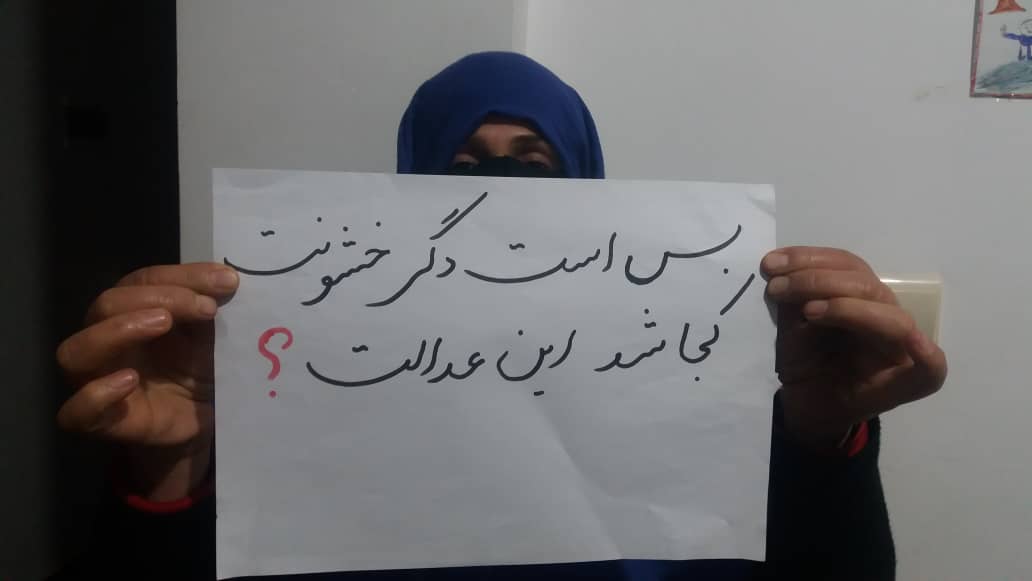
Taliban has banned women from colleges and universities, and faculty are not allowed to make online classes for girl students.
It came as a shock for Zuhal Hashmi, a student of Bakhtar University, Kabul, when she got to know that the Taliban has banned women from universities. Zuhal is a student in the BBA programme and on the day of the announcement, she went to the university to appear for last semester’s examination. “All girls were present, but the Talibs only allowed boys to enter the campus,” Zuhal told The Sunday Guardian over phone.

Taliban has banned women from colleges and universities, and faculty are not allowed to make online classes for girl students.
It came as a shock for Zuhal Hashmi, a student of Bakhtar University, Kabul, when she got to know that the Taliban has banned women from universities. Zuhal is a student in the BBA programme and on the day of the announcement, she went to the university to appear for last semester’s examination. “All girls were present, but the Talibs only allowed boys to enter the campus,” Zuhal told The Sunday Guardian over phone.
“All girls pleaded for hours, but the Talibs didn’t allow us and at last, they threatened to shoot us,” Zuhal added. She was weeping while narrating her ordeal. First, the Taliban regime expelled women faculty from higher educational institutes and then they separated classes for boys and girls and the current diktat has come as a blow to thousands of female students studying in Afghan colleges and universities.
Zuhal’s father was in the Afghan army but after the Taliban took over, he is jobless. Zuhal has a total of 11 family members, six sisters, one brother, her wife and two kids and two parents.
She used to work in a bank part-time to support her family. “But the Taliban has also banned girls from working in the bank. They snatched my job for bread earning,” Zuhal narrated. Her brother works in the Hadaf organization and now he is the only one to earn for the whole family.
Like many other female students, Zuhal is also worried about her future. “Women here are in mental trauma. We don’t know what will happen to us,” Zuhal said. Her professors have given female students assignments and on the basis of assignments, girls’ last examination will be taken.
They have asked their professor about their future education, “but even they are also not aware of our future”. Now girls in Afghanistan are requesting online classes, but the faculty is saying that they are not permitted to take online classes for girl students.
The video of women protesting in the Afghan capital, Kabul, has surfaced on social media. The women in the videos could be seen asking for their right to education. In one video, it is also seen that the Taliban is using water cannons to stop protesters.
Various Islamic nations have condemned the Taliban’s new rule. Turkish Foreign Minister Mevlut Cavusoglu called on the Taliban to reverse the ban, which he said was “neither Islamic nor humane.”
Saudi Arabia also urged the Taliban to change course. A Saudi Foreign Ministry statement said the decision was “astonishing in all Islamic countries”. UN Human Rights High Commissioner Volker Türk also condemned this step and described the ban as “another appalling and cruel blow to the rights of Afghan women and girls and a deeply regrettable setback for the entire country”.
Jamila, a student of Curative Medicine at the Afghan Swiss Medical Higher Educational Institute, was going to appear for her 11th semester examination. But like others, she was also not allowed to enter the campus. “I got information about this ban via the class WhatsApp group. From that moment, my life has turned upside down,” Jamila narrated her ordeal over the phone. “The only thing left for me is tears,” she added.
Jamila’s professors have told students to wait until further notice. Jamila has ten members in the family, five brothers, three sisters and two parents. Her three brothers are abroad and two are in Afghanistan. Her father is a retired employee of the Agriculture Department and currently, she is working as a nurse part-time to support her family.
“Even one of my classmates tried to take her life,” Jamila said. “We girls are blank. I always wanted to contribute to society as a medical professional, but this has ruined my life,” Jamila said while crying. Her parents are comforting her by saying that “Allah will take care of everything”.
Not only this dictate, but the deplorable condition of electricity and internet is also a big problem for Afghan students. According to Neda Mohammad Nadeem, the minister for higher education in the Taliban government, the reason behind this ban is that women students had ignored Islamic instructions including what to wear or being accompanied by a male relative when travelling.
“Unfortunately, after the passing of 14 months, the instructions of the Ministry of Higher Education of the Islamic Emirate regarding the education of women were not implemented,” Nadeem said in an interview on state television. “They were dressing like they were going to a wedding. Those girls who were coming to universities from home were also not following instructions on hijab,” he added.
Many students in Afghanistan were aware that this ban may come soon. “Last month, one of my classmates said that the Taliban may ban girls from higher educational institutes. But I thought it is fake news but today they did this,” Jamila said. She also informed about the current situation in Afghanistan. “It is winter and there are no clothes to wear. I work in the maternity ward, there is no food, and we are living in a crisis. All women and their new-born admitted to the maternity ward are malnourished,” Jamila said.
Rituparna Chatterjee
Fri, December 23, 2022
The Taliban rulers of Afghanistan have fenced off at least one university in Kabul with barbed wire and posted armed guards to keep women out, according to several media reports.
As the taliban diktat on women’s higher education came into force, video obtained by The Associated Press showed women weeping and consoling each other outside a campus in Kabul.
“The Taliban have used barbed wire and armed guards to prevent Afghan women from entering universities. Yet, despite the intimidation, they protest alongside brave Afghan men, demanding women and girls be given their basic rights,” tweeted BBC anchor and correspondent Yalda Hakim. Hakim also posted a video of women holding up placards and raising slogans.
Several men have walked out of classrooms and many professors in Afghanistan’s universities have resigned in protest against the Taliban’s hardline measure to not allow women students in educational institutions.
Shabnam Nasimi, former policy advisor to minister for afghan resettlement & minister for refugee, tweeted an image of a burqa-clad woman standing outside a barbed wire gate, captioned: “If this image doesn’t break you, I don’t know what will. Despite Taliban banning female university education, this young woman stood outside Kabul University today, hoping that they may still let her in. The Taliban barbwired the main gate & only allowed male students to enter.”
The Taliban banned all female students from universities in Afghanistan on 20 December.
Following a meeting of the Taliban government, universities were instructed in a letter – confirmed by the regime’s higher education ministry – to suspend female students’ access immediately until further notice, in accordance with a cabinet decision.
The Taliban reassumed control of Kabul last August, as western forces brought a hasty end to their decades-long presence in the South Asian country.
Taliban armed guards were seen outside four Kabul universities on Wednesday. Rahimullah Nadeem, a spokesman for Kabul University, confirmed to AP that classes for female students had stopped. He said some women were allowed to enter the campus for paperwork and administrative reasons.
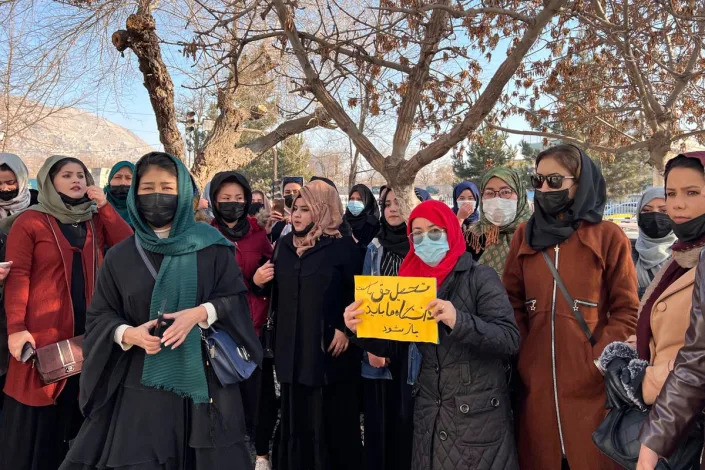
Afghanistan Protest Education (Copyright 2022 The Associated Press. All rights reserved.)
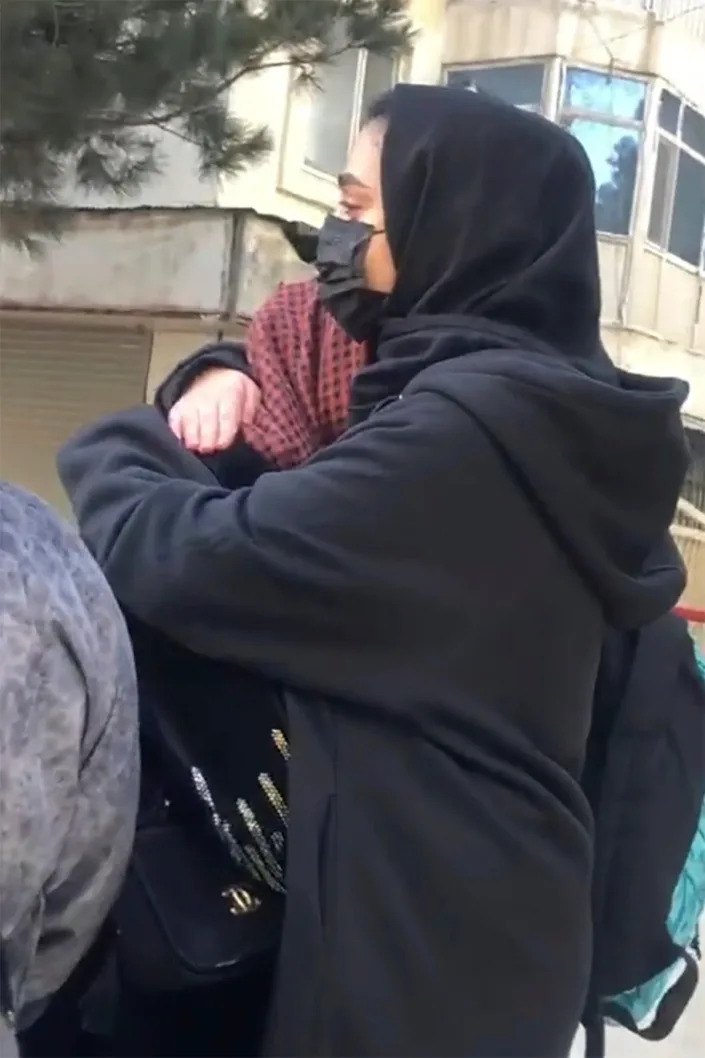
Women weep outside Edrak University in Kabul (AP)
Despite initially promising a more moderate rule respecting rights for women and minorities, the Taliban have widely implemented their interpretation of Islamic law, or Sharia, since they seized power in August 2021.
They have banned girls from middle school and high school, barred women from most fields of employment and ordered them to wear head-to-toe clothing in public. Women are also banned from parks and gyms.
The move will hurt efforts by the Taliban to win international recognition for their government and aid from potential donors at a time when Afghanistan is mired in a worsening humanitarian crisis. The international community has urged Taliban leaders to reopen schools and give women their right to public space.
The Voice of America reported that dozens of Afghan women’s rights activists and female students staged protests in Kabul, Takhar, and Nangarhar provinces. According to Pakistan’s Dawn newspaper, political activists and students also held a protest on Friday in Quetta.
The workers and supporters of the National Democratic Party (NDP) gathered in front of the Quetta Press Club where NDP Balochistan president Ahmed Jan Khan addressed the crowd, the paper reported.
(With additional reporting from agencies)





